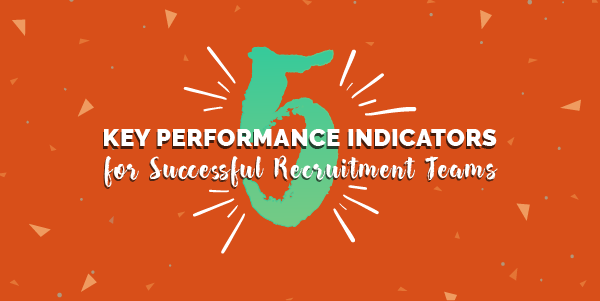Every business needs key performance indicators (KPIs) to measure their success rate. It’s a value that can be measured to pin down how effectively a business is reaching the objectives it set out.
While the business, as a whole, has its own KPIs, all departments and employees within the business also need KPIs to measure effectivity.
In recruitment, measuring the success of your recruitment initiatives is not as simple as looking whether your team is capable of getting new hires for every vacant position. Recruitment is an investment. Therefore, you need to determine if your recruitment strategies are worth it. This is where KPIs come in.
Learn how to measure the success of your recruitment team. Whether it’s an in-house team or a recruitment firm, these are the KPIs you need to monitor.
Share this Image On Your Site
1. Number of qualified candidates per post
The sheer number of resumes you get for each job opening is not enough to say that your recruitment efforts are working. Not all candidates are made equal. You must look at the number of “qualified” candidates you have per post to ensure that you are targeting the right talent pool.
A qualified candidate can be compared to a marketing qualified lead (MQL) or the type of lead which marketers and sales people go after. These are the leads with the highest chances of converting into customers based on predetermined criteria.
In recruitment, a qualified candidate is the one with the highest possibility of getting hired based on the set criteria.
2. Recruitment timeline
For every vacant seat, another employee spends time filling up for the position. This could affect team morale and employee engagement rates. Recruiters need to fill the empty seat as fast as possible to prevent this from happening.
Thus, your team needs to measure how long it takes to fill the position from the job ad all the way to the new employee’s first day on the job. You need to determine how fast the chosen candidates move through the entire recruitment process.
This KPI enables your team to spot any bottlenecks in the hiring process and create solutions for them.
3. Number of interviews per candidate
A recruitment process is made up of several stages and players. As mentioned, the ability of the recruitment team to assess CVs help in pulling out the qualified candidates from the pool of resumes. This helps speed up the process, as companies do not need to waste time on unqualified candidates.
But, the screening process doesn’t just involve picking the top resumes. It also involves initial assessments and phone interviews before a member of the leadership team or senior management sits down with the candidate.
Your recruitment team needs to measure the number of interviews per candidate to keep it consistent and limited. This helps you determine how much time is spent on a candidate. By doing so, you can minimize the chances of wasting the company’s and the candidate’s time. After all, time is a resource.
4. Job offer timeline
A qualified candidate goes through a series of interviews (and even panel screenings with the senior hiring manager or leadership team) before a job offer is made. There will be fallouts. So, your job as recruiters is ensure that the transition of qualified candidates from one point to another during the hiring process is smooth and fast.
To do this, measure the number of days consumed from a candidate’s application date to when the job offer is accepted or rejected. It’s important not to confuse this with recruitment timeline, which refers to days spent from when the job position is made vacant to filling it.
Sometimes, job offers can take a while and the bottleneck comes from the hiring departments. This KPI helps you improve your timeline. It also prevents qualified candidates from slipping through the net. Many often end up accepting other job offers because of the waiting time.
5. Acceptance rate
After going through all the motions, the goal is to have the top candidate accept the job offer. Acceptance rate is the percentage of accepted job offers from the total number of job offers extended to qualified candidates. It shows clearly if the recruitment process as a whole is working or not.
Measuring acceptance rate is not just about looking at the number of candidates who accepted the job offers. It also means assessing why your job offers are being turned down.
Successful recruitment is not just about getting high numbers of interested people. Your internal team and a recruitment firm should focus on quality rather than quantity and look for bottlenecks that affect the hiring process.
WE LEAD INNOVATION IN HEADHUNTING
SPECIALIST RECRUITMENT SOLUTIONS DELIVERING UNRIVALLED RESULTS
IN THE PHILIPPINES
Manila Recruitment is recognized as the leading recruitment firm in the Philippines for headhunting, executive search, expert, technical and IT recruitment. We share an unrivalled passion to help your business succeed by understanding your goals, then sourcing and providing you with your number one asset – driven, dedicated and exceptional people!
Experience the Manila Recruitment difference, and give your business in the Philippines a competitive advantage by contacting us today. Whether you are exploring an offshore solution, or are an established entrepreneur, SME or Multinational in the Philippines, our team has the experience and a tailored recruitment solution to introduce you to the top talent in the Philippines.
Contact our Manila Recruitment team at hello@manilarecruitment.com.



![5 Key Performance Indicators for Successful Recruitment Teams [with Infographic]](https://manilarecruitment.com/wp-content/uploads/2016/11/MR-Performance-Indicators-infographic.png)












